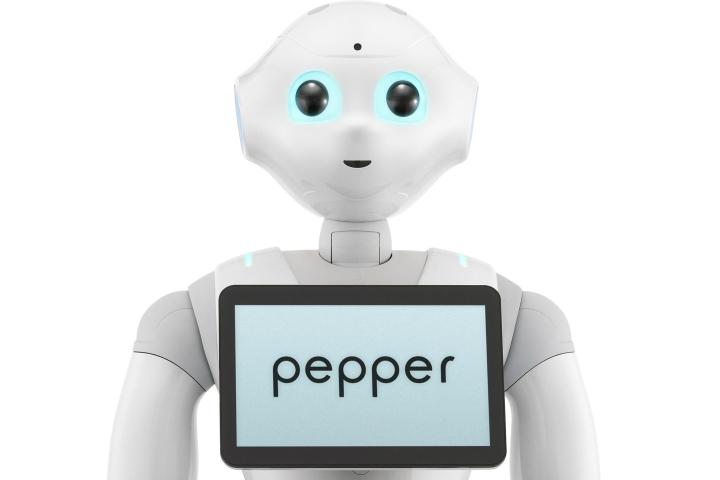
The android, which can understand and respond to a range of human emotions, started assisting visitors at two health facilities in Ostend and Liege on Monday.
Pepper launched to great fanfare in Japan exactly a year ago, with the first batch of 1,000 units snapped up in just 60 seconds. The creation of Japanese telecom giant SoftBank and French robotics company Aldebaran SAS, the robot is being marketed as an assistant for businesses and also as a companion for families and those living alone.
Standing 120-cm tall, Pepper can converse in a number of languages and also communicate via its torso-based tablet. And thanks to a set of wheels, it’s mobile too, though admittedly stairs still pose a bit of a problem.
In the Liege hospital you’ll find Pepper hanging out in the reception area, welcoming visitors, helping with simple inquiries, and giving directions. In the Ostend hospital, however, it has a little more freedom, accompanying visitors to the appropriate department if asked.
In its basic form, Pepper costs around $1,850. The hospital version, however, comes with a hefty $34,000 price tag. This is down to its specially designed software, created by Belgian firm Zora Bots, and also the help desk services provided by the company should any issues arise when bot the bot’s on duty.
If Pepper sticks around long enough, it might one day find itself working alongside another medical-focused bot, Robear. Also from Japan, this larger, clunkier robot is designed for more heavy-duty tasks, namely lifting patients in and out of bed, or helping them move between sitting and standing positions. Engineers last year released the third prototype, with each new version lighter and displaying greater functionality. Its bear-like face is showing signs of improvement, too.
As for Pepper, DT had a chance to meet the robot at Mobile World Congress earlier this year – you can check out the amusing encounter here.
Editors' Recommendations
- Amazon’s new humanoid robot will not take human jobs, company insists
- Robots deployed to assist New York City police … again
- Spot’s latest robot dance highlights new features
- Hyundai’s new MobED robot can carry booze and babies
- Need a new budget-friendly phone? Cricket Wireless’s Icon 3 has you covered


